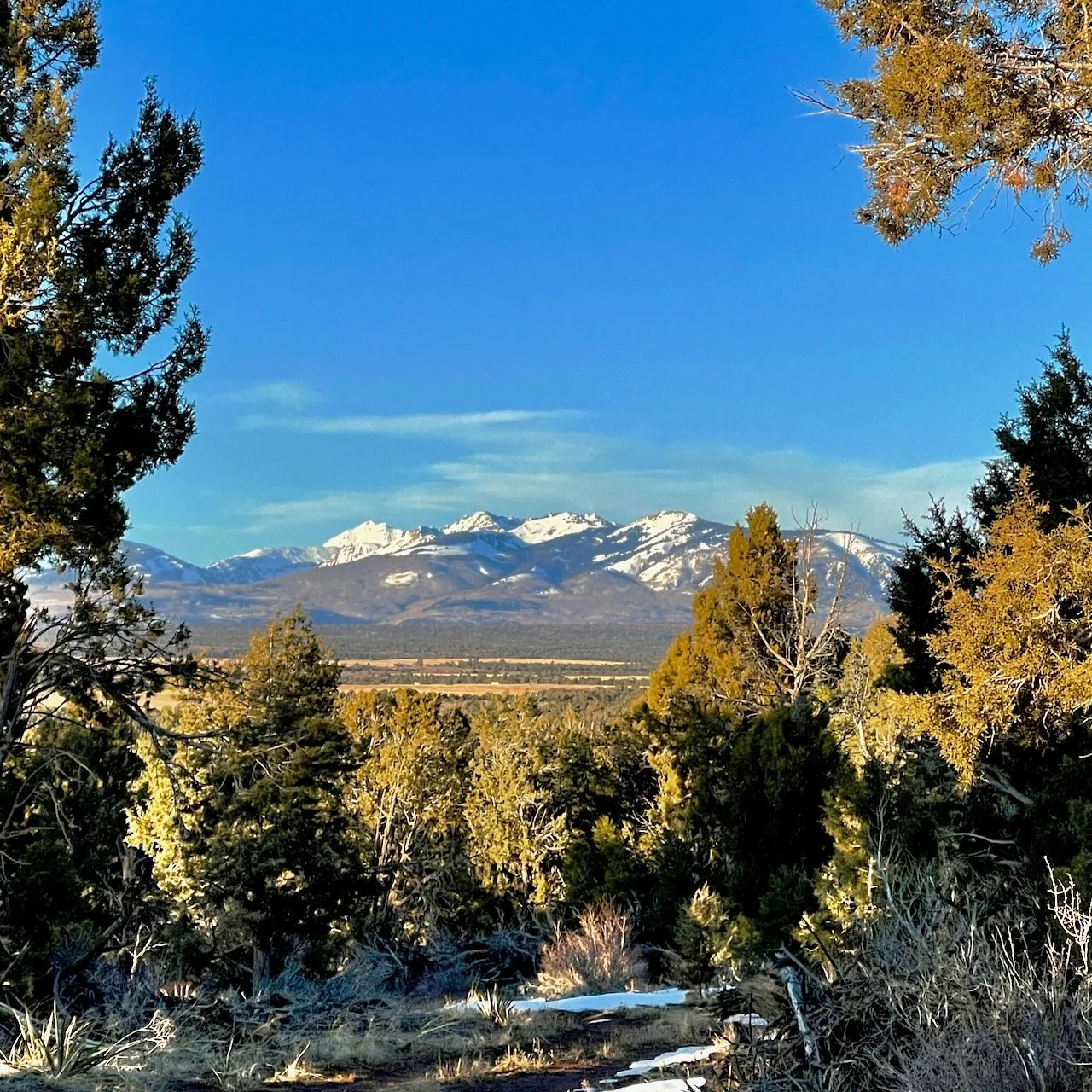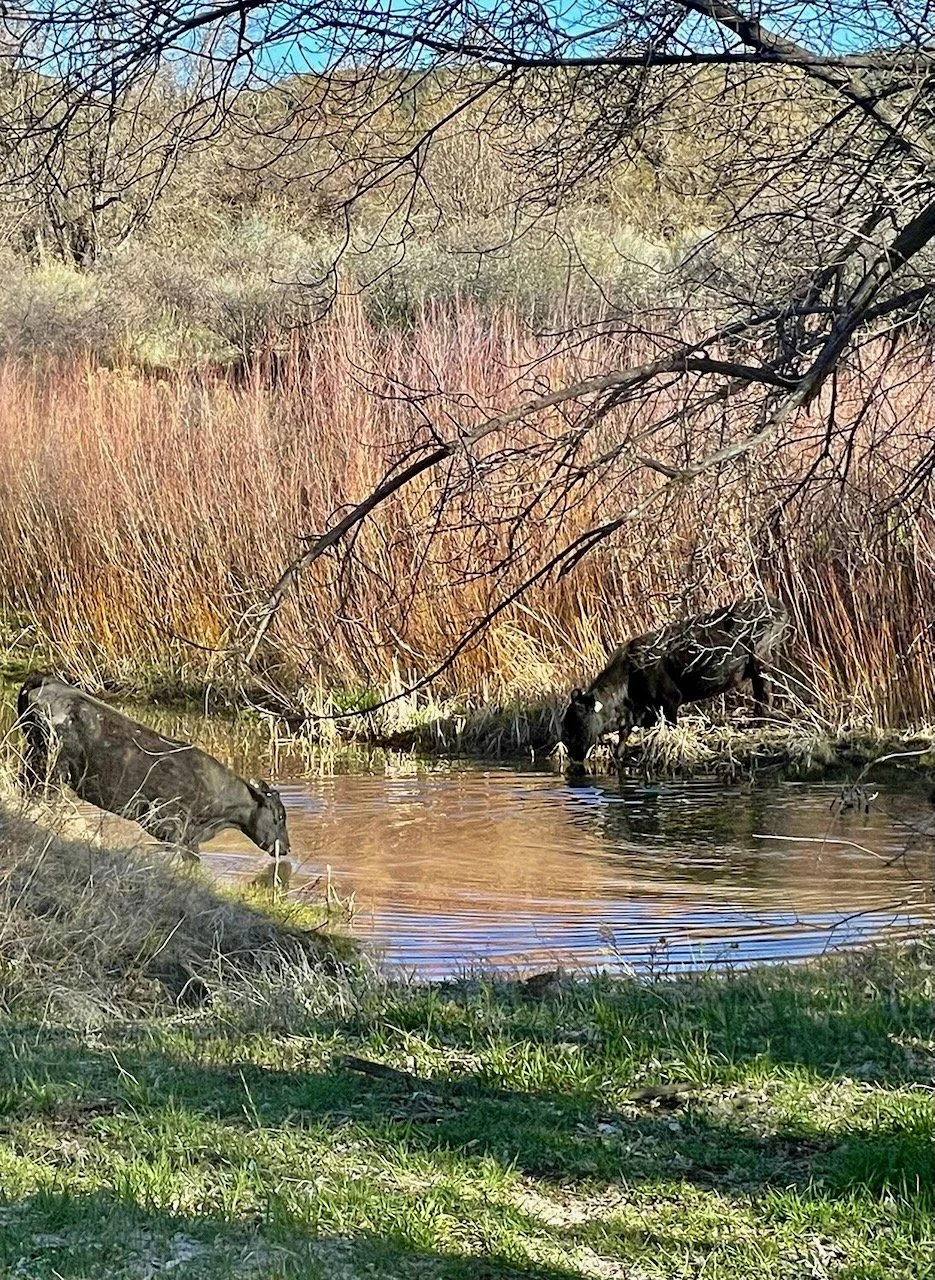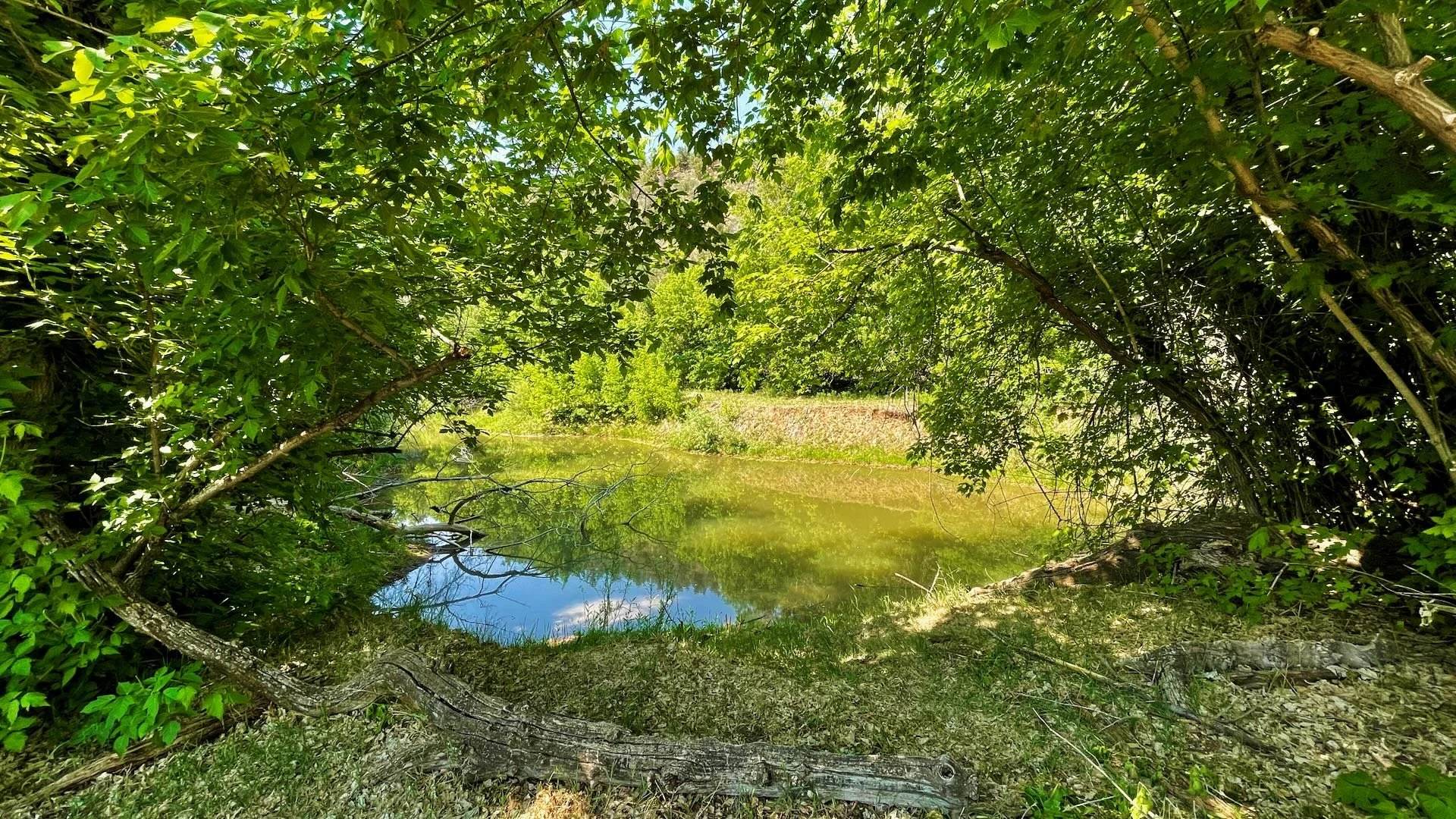Our Eco-Campus
Earthville Institute is based at Windhorse Village, a small ecovillage community incubating in the beautiful Four Corners area of Colorado, a part of the homeland of the Ute, Diné (Navajo), and ancestral Puebloan peoples.
The 640 acres of Windhorse Village provide ample space to support a thriving learning community while treading lightly on the planet and leaving plenty of space for nature to be itself.
A campus in nature, of nature, for nature
What defines an eco-campus? It cannot be only its buildings, no matter how “green” they might be, if by “eco” we truly mean ecology. What makes an eco-campus is, first of all, the loving, respectful, disciplined restraint that leaves nature to thrive as it is.
Our definition of “eco-campus” is not a campus with a few ecological features, but rather the opposite: an ecology with a few campus features — only what is necessary for the Institute’s people and programs to flourish sustainably along with the larger, natural whole.
“If we’re talking about truly being sensitive to nature, then the most eco-friendly building is no building.”

Earthville Insititue’s campus is a testing ground and learning laboratory for state-of-the-earth solutions — sensitive and creative responses to the local and global climate crises we face.
The aspiration is that as the campus develops it will serve as a showcase for regionally appropriate best practices for ecological sustainability, resource efficiency, fire safety, well-being, affordability, and beauty.
Spaces & facilities
Earthville Institute is a place to learn not only about nature but also from nature, and to understand our place within it. For this, the most valuable “facility” a campus could have is an abundance and diversity of unspoiled natural space. This is the “classroom” in which we study nature and learn to live and create in harmony with it.
Our intention is that the few structures we do build will make the lightest possible footprint on the earth, and that they will help us give back to nature more than we take.
“Study nature. Love nature. Stay close to nature. It will never fail you.”
SUSTAINABILITY: BEYOND THE BUZZWORDS
Earthville Institute’s approach to designing its campus and building its structures is rooted in traditional wisdom and informed by modern knowledge. We start with patient observation of the natural environment through at least four seasons, and then move into a contemplative design process that aspires to build in harmony with nature to the greatest extent possible. When it’s time to build, we make maximum use of natural and local materials such as handmade, sun-baked adobe bricks and straw bale. Every building is designed for ecological sensitivity, beauty, health, thermal efficiency, and — someday far in the future when we humans are long gone — decomposition back into nature, like compost.
› Learn more about Earthville’s approach to natural building and related programs
Structures sprouting on campus
-
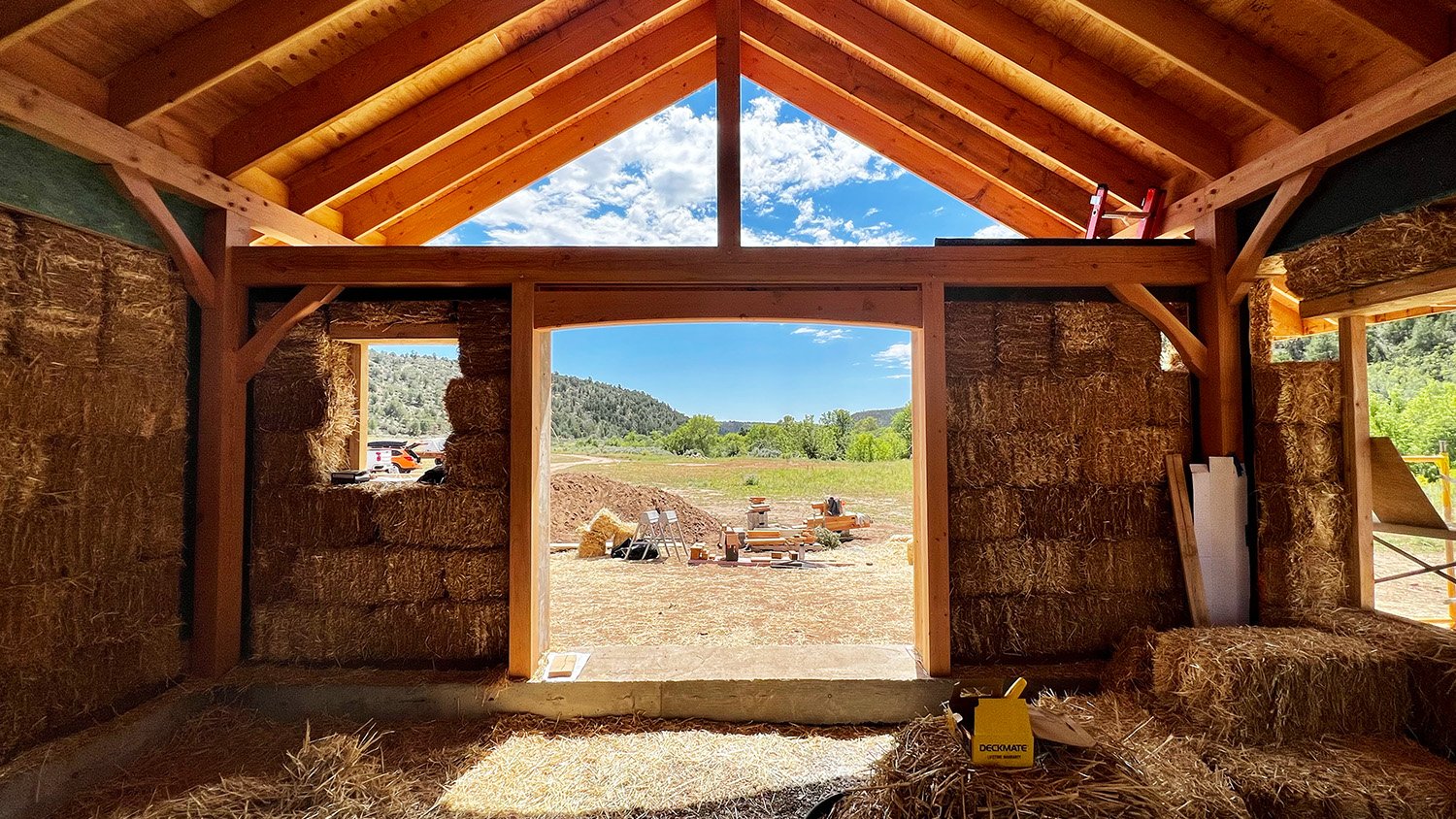
Community kitchen
To build a campus, we need to feed the students and volunteers who show up to help, so a kitchen is a natural first project. We’re building ours from natural materials: straw bale and earth, supported by a traditional timber frame. When completed, the kitchen will serve as a co-working and gathering space for the Earthville community (and even unfinished, it already does).
-

Geodesic dome greenhouse
We aspire to grow as much of our own delicious, organic, plant-based food as possible, and in our climate the first step toward year-round gardening is a greenhouse — in our case, a geodesic dome with several passive temperature-regulation features.
-

Pole barn shelter
The pole barn provides a sheltered space for events, group meals, and other gatherings, as well as storage for our natural building materials such as straw bales and our hand-made adobe bricks. You might find music being made here, too.
Staying with us: Three options during our startup stage
-
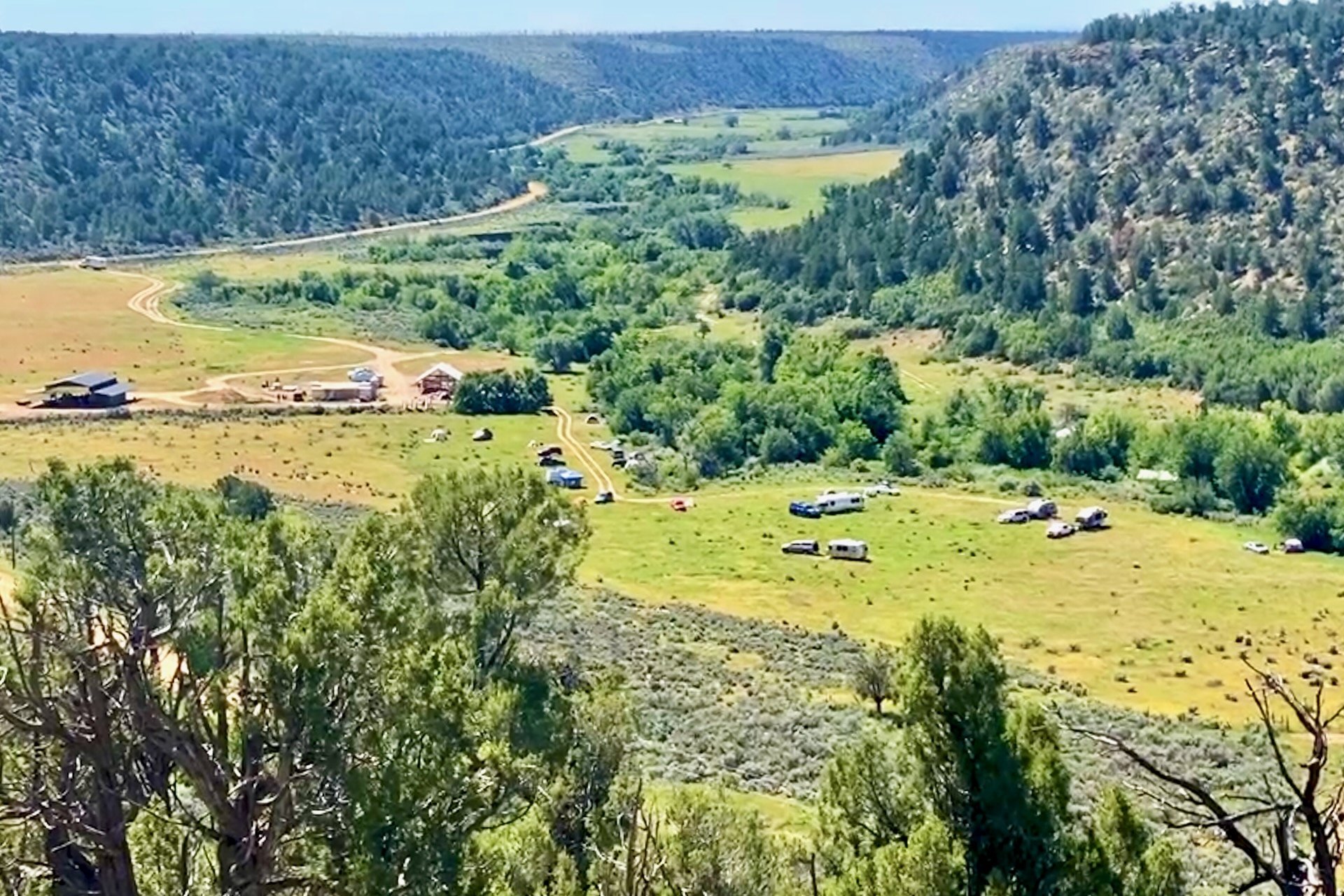
Eco-campground: BYO
Nestled up against the trees along the Creek, our rustic eco-campground provides plenty of space to pitch your own tent or park your trailer or RV (no RV hookups). There are no “improved” campsites; just the undisturbed natural beauty of the riparian valley. Campers are welcome to use our outdoor showers with (limited) hot water, and there’s an outhouse when nature calls.
-
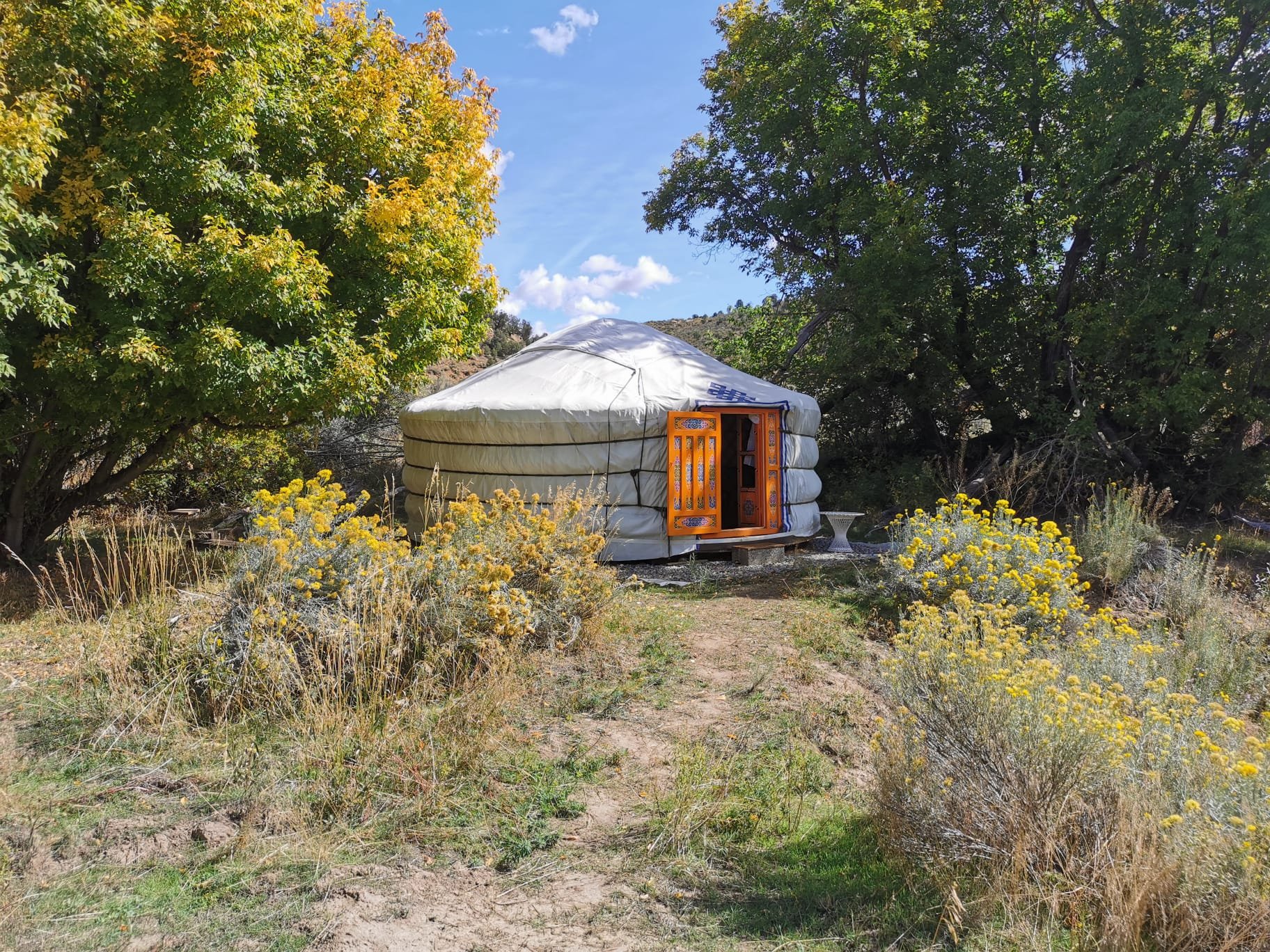
Mongolian ger (yurt): Tingmo
Our beloved ger was handmade by a Mongolian family from natural materials, beautifully adorned with Buddhist symbols. We nicknamed it “Tingmo” after the fluffy white variation on Tibetan momos. When not in use for our programs, Tingmo is available as a peaceful retreat for guests (though it is usually reserved months ahead, and typically not available April through October).
-

Canvas wall tents
Made from natural materials, our canvas wall tents are tall enough to stand up in and spacious enough to move around and store a reasonable amount of stuff. Like glamping but refreshingly free of glam: a place to live close to nature with just enough comfort. We have just two at the moment and they’re usually booked months in advance, but it doesn’t hurt to ask.
ABOUT: OVERVIEW | OUR ECO-CAMPUS | OUR APPROACH TO LEARNING | CAMPUS LIFE | OUR PEOPLE | VISITING EARTHVILLE


